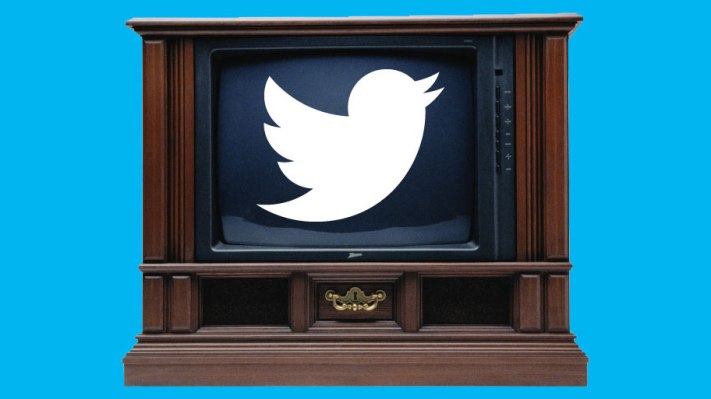Twitter is today putting in place the latest piece of its global “social TV” strategy, which involves measuring how its users share and discuss TV programs and related content on Twitter’s network. Twitter is turning on TV ratings in the UK, in partnership with WPP subsidiary Kantar Media. The service — which includes a variety of metrics, the creation of a TV-metric specific data feed, and an analytics dashboard — is set to go live by the middle of October.
The news that the service is finally getting turned on was a long time coming. It’s been more more than one year since the two companies first announced that they would work together on expanding Twitter TV Ratings beyond the U.S. market, where Twitter works with Nielsen, to the UK and Spain; and it’s been six months since Twitter announced that its Kantar deal would get expanded to four other regions — the Nordics, Russia, parts of Africa and southeast Asia.
For now, the only two markets that are live (or nearly live, give or take a couple of weeks) are the U.S. and UK.
Twitter’s social TV services with Kantar are built around the same basic model that Twitter first put in place in the U.S., where it works with Nielsen to measure how Twitter users tweet about TV shows and related content. (The Nielsen deal, by the way, also has an international component: Twitter is working with Kantar’s rival in Italy and Australia. Further afield, Twitter works with Video Research in Japan and GFK in Germany, Austria and the Netherlands.)
Twitter’s decision to go big on TV analytics, and to exploit that for its own commercial boost, are borne out of the fact that people already spend a lot of time talking about TV on the social network. The record for the most-shared Tweet ever was spawned by a TV personality, Tweeting during a TV show (3.4 million RTs and counting) — a synergy that Twitter makes a lot of efforts to play up.
In theory, there are a couple of different levels of insight that Twitter gets from this social TV data. The first is around the programming itself, and how consumers respond to the content — both during shows as “second screen” interactions and responses before/after broadcasts.
The second is around areas like advertising. This involves how users are responding to ads, and also where their attention is turning (to Twitter) when the ads come on during a program. Twitter, as an ad-based service itself, sees an opportunity as a supplementary screen for advertising in those gaps, and gathering the data to prove that point can only help it.
Last quarter, Twitter reported $250 million in revenues, driven largely by advertising — underscoring yet another synergy between itself and TV: for both, advertising is what helps their wheels turn.
Kantar says that the new tool will focus on geofiltered UK Twitter data and are bringing metrics and analytics “that have never been available before in the UK.”
These include matching specific Twitter users to an affinity with specific brands, channels and programs; monitoring the number of people who view specific Tweets related to individual programs; the number of impressions — times a Tweet or Retweet has been sent — for a particular program. In other words, Kantar is measuring a lot of the way that Twitter is measured by others, but it is able to specify its parameters to work specifically with certain TV shows.
Other areas that will be covered by its analytics include the average Tweets per minute and the highest volume of Tweets per minute for specific shows.
A preview of the kinds of data that Kantar will be providing came out earlier this week in a study from the researchers about some of the most popular TV content and TV trends on Twitter in the UK.
Other services set to go live by mid-October include the company’s Instar Social analytics dashboard. Designed for broadcasters, media agencies and advertisers, it sits alongside other TV analytics tools to further drive home the point that Twitter should very much be thought of as part of the standard mix. Instar Social will include a real-time leaderboard of the top Tweeted programmes and other insights.
On the horizon, Twitter and Kantar are working on more bells and whistles including an API data feed that can integrate directly into other analytics packages.
